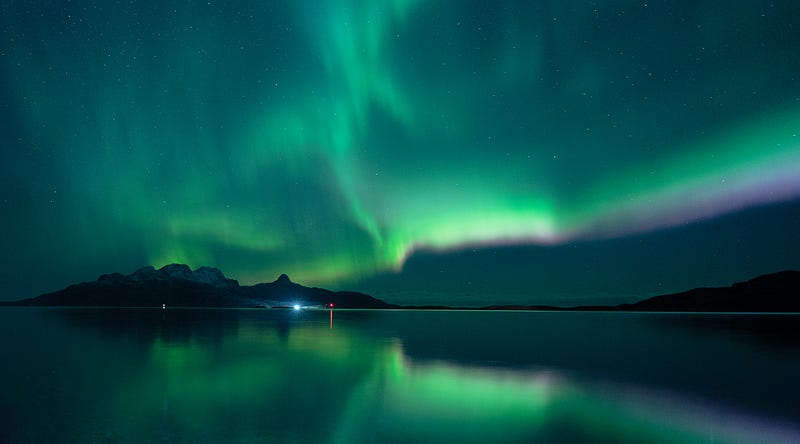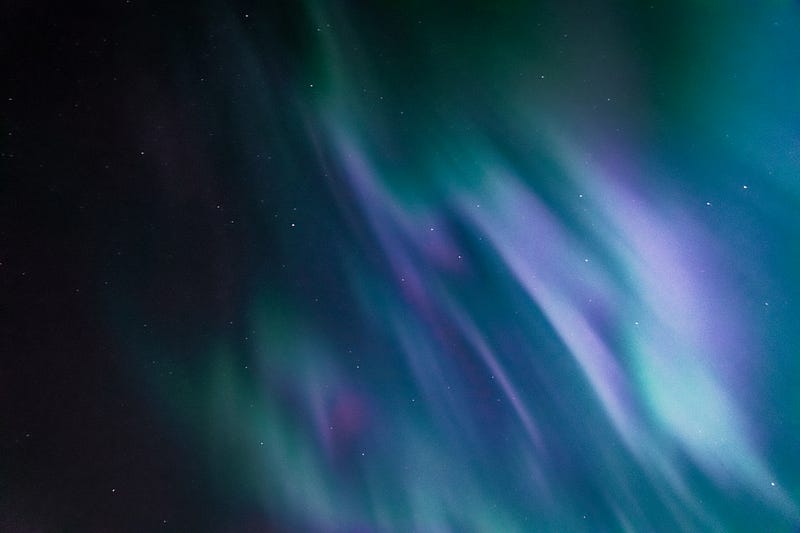The Enigmatic Science Behind the Auroras: Nature's Light Show
Written on
Chapter 1: The Legend of the Northern Lights
In Finland, the auroras are known as ‘revontulet’, translating to ‘fox fires’. According to folklore, when winter nights grow longer and temperatures drop, mystical foxes race across the Arctic terrain, igniting fires and illuminating the northern skyline. This breathtaking spectacle is commonly referred to as the 'Northern Lights' or 'aurora borealis.' Conversely, a similar phenomenon occurs near the magnetic south pole, called the 'aurora australis.'
During my travels to Finland, I was fortunate enough to witness the Northern Lights firsthand, not from my home in the UK, but amidst snowy landscapes. As we patiently awaited the display, I was captivated by the ethereal glow that enveloped the night. My personal memory of this event is less vivid than many striking photographs; I recall a mystical green haze that could easily be mistaken for a faint cloud if not observed closely. My husband captured some stunning images with his camera, which revealed the auroras' beauty far better than my own eyes could perceive. This discrepancy is attributed to our limited night vision, as the photoreceptors in our eyes that detect low light struggle to capture colors effectively, rendering the auroras somewhat muted without photographic assistance.

Chapter 2: The Science Behind Auroras
The auroras, despite being visible in the icy regions of the poles, are caused by charged particles expelled from the Sun. Particularly intense solar ejections can greatly amplify auroral activity, leading to what scientists refer to as geomagnetic storms. These charged particles traverse the expanse of space, and upon reaching Earth a couple of days later, they are deflected by our planet's magnetic field. This intricate process can be conceptualized as Earth’s magnetic field acting like a funnel, directing the charged particles into two streams that converge around the magnetic poles.
Although auroras can occur during daylight, they remain invisible to us.

To the naked eye, an aurora appears as a magical light show, almost fluorescent against the dark winter sky. The vibrant light we observe arises from the interaction of charged particles with specific atoms and molecules in our atmosphere.
Typically, the predominant color observed in auroras is green, a result of high-energy electrons colliding with oxygen atoms. This collision excites the atom, resulting in the emission of a high-energy photon, perceived as green light. Conversely, when lower-energy electrons bombard oxygen atoms, they emit red light. Green auroras are far more frequent than red ones. Additionally, other atmospheric elements like nitrogen—and less frequently hydrogen and helium—contribute to the spectrum of colors visible, creating hues of blue, pink, and purple.
The most opportune times to witness these enchanting light displays are around the equinoxes and when solar activity is at its peak, which is projected to increase until the mid-2020s.

So, there is ample opportunity to experience these enchanting phenomena. Perhaps this winter, you too will be able to behold the mesmerizing light show created by these mystical fire foxes.
This video, titled "The Science Behind the Northern Lights | Star Gazers," delves into the fascinating science and legends surrounding the auroras, offering insights into their formation and cultural significance.
In this video, "Science behind the formation of auroras," viewers can explore the detailed processes that lead to the creation of these stunning natural light displays.
Key Sources: ‘What Causes The Northern Lights’, Royal Museums Greenwich; ‘What Causes the Northern Lights (and where you should see them)’, American Chemical Society.
For more about my stories and insights, feel free to explore the link below: